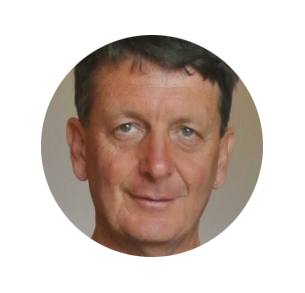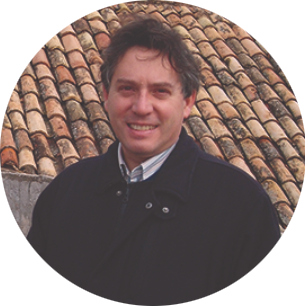What is the Environmental Impact of the ALPHEUS Project?

Hydropower applications pose a series of environmental impacts on ecologically sensitive areas, and for this reason require careful site planning. The study of environmental aspects (siting and land use) is paramount in ALPHEUS and ALPHEUS-like projects.
The Marine Strategy Framework Directive (MSFD) imposes the monitoring and the assessment of European marine waters quality against 11 qualitative descriptors for the achievement of a Good Ecological Status (GES).
Hydro pump plants affect: water quality such as turbidity and alteration in sediment transport (which is evaluated by MSFD descriptors “D6 Seafloor integrity”, “D7 Hydrographical conditions” and “D8 Contaminants”), aquatic ecology e.g., friendliness to biota and loss of nearshore habitats (MSFD descriptors “D1 Biological diversity” and “D3 Commercial fish and shellfish”) and may
induce physical alterations (MSFD descriptor “D11 Energy and marine noise”).
In the planning and construction phases of new pumped hydro plants, only sites where impacts can be mitigated to acceptable levels are selected; mitigation may be achieved by scaling down or relocating the project site as well as by applying additional measures to reduce the impacts either at the source or at the receptor.
How does the ALPHEUS project affect fish?
Fish passing through operating hydropower turbines can be subject to lethal injuries due to collision, rapid decompression and shear stress (which may also include turbulence), resulting either in immediate or delayed mortality.
Delayed mortality may also occur as a result of non-lethal injuries and elevated stress levels. Indirect turbine impacts consist in higher susceptibility to diseases, increased predation and adversely affected behavior (e.g. disorientation) and are potentially negative effects that fish are more likely to experience downstream hydropower installation. Both direct and indirect effects ultimately result in ecologically significant impacts to natural fish populations and, in case of long-distance migrators (e.g. salmon, eel), the disruption of migrating patterns for feeding or reproductive purposes.
How can fish be protected from the ALPHEUS project?
Hydropower impacts on local and migratory fish may be primarily mitigated by designing so-called fish-friendly turbines, which differ from conventional turbines in terms of turbine speed and operating scheme, number and geometry of blades and reduced gaps between rotating and stationary components, and by installing / building fish protection screens / fishways, which allow the bypass of hydroelectric plants or dams.
Hydropower-related impacts are usually assessed in terms of survival and injury rates using a variety of approaches such as netting / electrofishing seasonal surveys, mathematical modelling, underwater cameras and sensor fish, radio tagging and recapture techniques, and acoustic telemetry. Within ALPHEUS, we also suggested that proxies of acute stress be evaluated to clarify the role of hydropower plants on the physiological status of fish. All the above methods must first be calibrated based on conditions of minimal anthropogenic impact pre-installation.
ABOUT THE AUTHORS

Giuseppe Scapigliati is Full Professor of zoology and cellular and molecular biology of animal cell since 2011. He has been involved in zoological research since 1980 and has gained significant experience in both industry and academic worlds by exploiting mammals and fish as experimental models. His research is centered on the fields of evolutionary biology, comparative immunology, animal physiology, cell biology and biotechnologies. He acted as PI for 12 national and 3 international EU research projects within the period 1996-2017. He’s member of the Editorial Board of Fish and Shellfish Immunology, Developmental and Comparative Immunology and PLoS ONE and has acted as reviewer for more than twenty scientific journals. Within ALPHEUS, he’s implementing tasks 2.5 (Fish survival parameters) and 4.4 (Monitoring of fish mortality, stress levels and behavior).

Marco Marcelli is Associate Professor of biological oceanography, applied oceanography and applied ecology since 1999 and coordinates the research activities of the Laboratory of Experimental Oceanology and Marine Ecology. His research is centered on the study of coastal and pelagic marine ecosystems and mainly concerns: the study of coastal and marine resources management and evaluation of marine ecosystem benefits, research on energy system in the areas of renewable energy with particular reference to the interaction with marine ecosystems and study of coastal dynamics through the application of mathematical and hydrodynamic models based on the geomorphological and sedimentological characterization of coastal environments are some examples. His role in ALPHEUS is to supervise task 2.5 and to actively implement all tasks of WP 5 (Civil Structure Design).

Andrea Miccoli is a fixed term researcher in zoology since January 2019. He obtained his PhD in Marine Biology and Ecology in 2017 with a major in fish reproductive physiology, followed by a short-term involvement in the European DIVERSIFY aquaculture-centered project and a year at the Bermuda Institute of Ocean Sciences as Research Associate II during which he participated to several oceanographic cruises funded by NASA (Exports) and NSF (BIOS-SCOPE, OFP). His current lines of applied research are mainly centered on animal physiology (with a particular focus on fish) and comparative immunology. Within ALPHEUS, he acts as the principal investigator for Tuscia University and is personally involved in the implementation of tasks 2.5 and 4.4.

Antonio De Luca is a PhD student in Science, Technology and Biotechnology for Sustainability since February 2021. He obtained his Master’s degree in Marine Biology and Ecology in 2020 with an experimental thesis in biological oceanography by comparing the phytoplanktonic primary production estimated by a bio-optical model and a biogeochemical model. His PhD activities and research within ALPHEUS are focused on the implementation of tasks 2.5, 4.4, 5.4 (Assessment of environmental issues for the commissioning of low-head hydropower plants) and contribution to task 5.5 (Geographical Information System Tool as a knowledge base for users and stakeholders).

